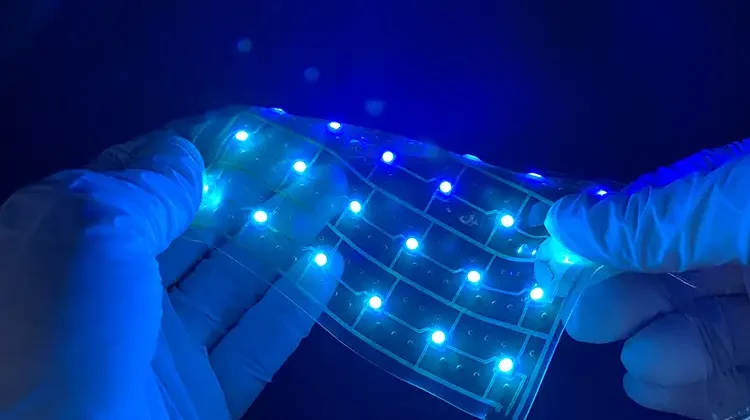
By Andy Behr, technology mgr.-Panasonic Electronic Materials Division
A primary factor limiting the deployment of printed electronics is a dearth of application-specific substrates. Conventional thermoplastic polymer films, like TPU and PET, typically employed for printed electronics, exhibit poor temperature resistance and relatively high hysteresis, creating significant challenges for printing and curing of functional materials, such as conductive pastes, surface-mount assembly processes and end-use durability. Researchers at this firm developed a new class of thermoset: soft, high-temperature-resistant, stretchable film designed specifically for printed electronics and soft circuit manufacturing. This article will discuss the substrate technology in detail, including testing results, and highlight some use-case parts fabricated with these materials.
Editor’s Note: Part 1 of this paper covered the basics of printed electronics, soft circuit materials and evaluation test results for the new thermoset film based on non-silicone polymer.
One of the primary factors limiting the deployment of printed electronics is a dearth of application-specific substrates. Conventional and readily available thermoplastic polymer films, such as thermoplastic polyurethane (TPU) and polyethylene terephthalate (PET), historically have been pressed into service for making printed-electronic circuits. However, these materials typically exhibit poor temperature resistance and relatively high permanent deformation after strain (hysteresis), creating significant challenges for the printing and curing of functional materials: conductive pastes; surface-mount assembly processes and end-use durability. Researchers at this firm developed a new class of thermoset films which are soft, highly temperature-resistant and stretchable – designed specifically for printed electronics and soft circuit manufacturing.
Proof-of-concept parts
Panasonic engineers have been working with OEMs and contract manufacturers from numerous industries to implement this material into new product designs. Described below are a few proof-of-concept demonstrators made with variety of conductive materials, highlighting some of the possible use cases for this new type of soft, high-temperature-resistant, stretchable film.
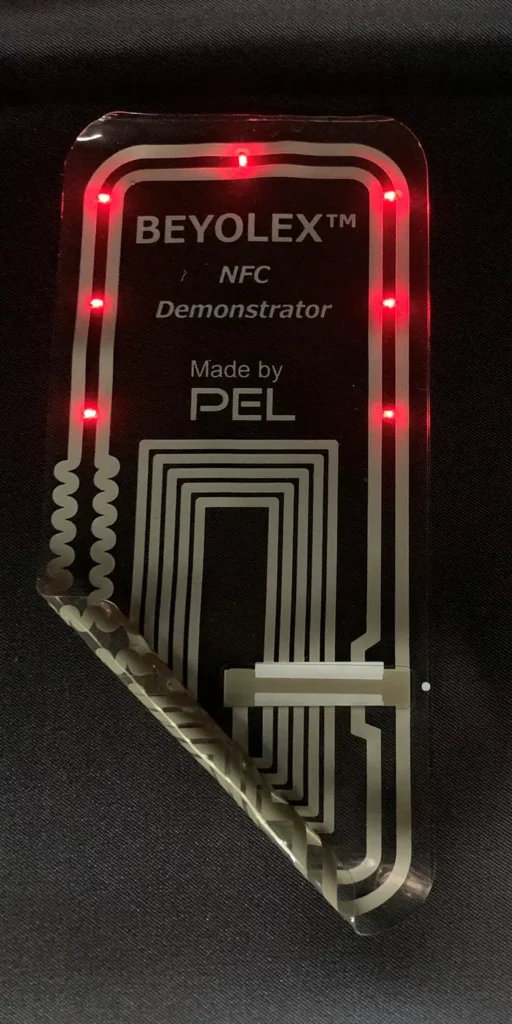
NFC energy-harvesting device: This NFC device demonstrator was produced by Printed Electronics, Ltd. It was made using MUAS13111AA from this firm and a conductive ink from PEL (see Figure 1). This device exhibits good stretchability and conformability. An array of LEDs provides a visual indication of the NFC communication status. Thanks to the high-performance nature of the stretchable, thermoset film, the LEDs and circuitry are well protected by a second layer of the same film. This device can function in harsh conditions and even works underwater.
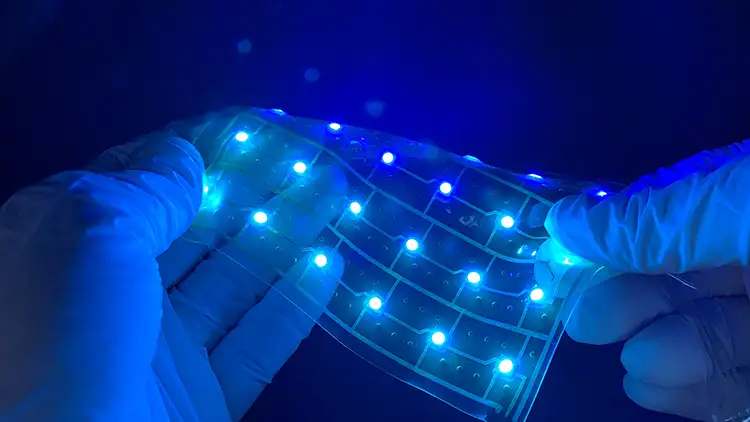
Pliable color-LED array:This color-LED array also was made using MUAS13111AA by Printed Electronics, Ltd. (see Figure 2). It can be used for lighting, decoration or digital signage. It’s very thin and lightweight compared to conventional-LED array constructions. Furthermore, it’s stretchable, pliable, rollable and foldable. It even can be crumpled, which isn’t possible for existing flexible-LED arrays. Because of its pliability, this type of device can be attached to virtually any surface, including clothing, buildings, unusually shaped surfaces – just about anything one could imagine.
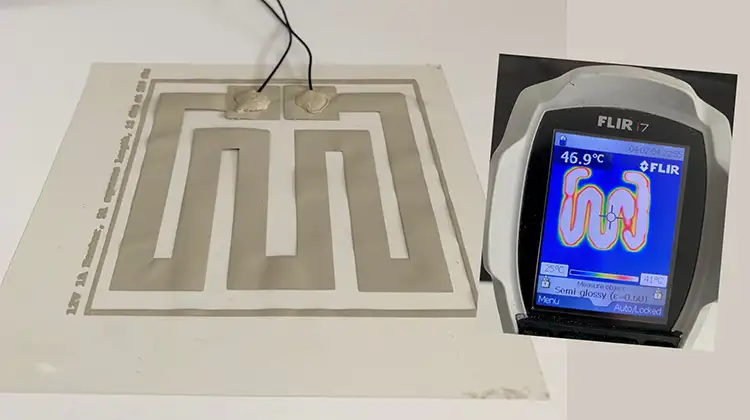
Soft and pliable heater:This stretchable, pliable heating device, made by printing DZP’s stretchable, silver-polymer paste S0860 on the MUAS13111AA film, is designed for textile integration (see Figure 3). The thermoset polymer nature of the stretchable film gives this device improved environmental stability and durability, which should extend the usable life of a pliable heater. It can be used for outdoor wearables, apparel, healthcare and other emerging applications.
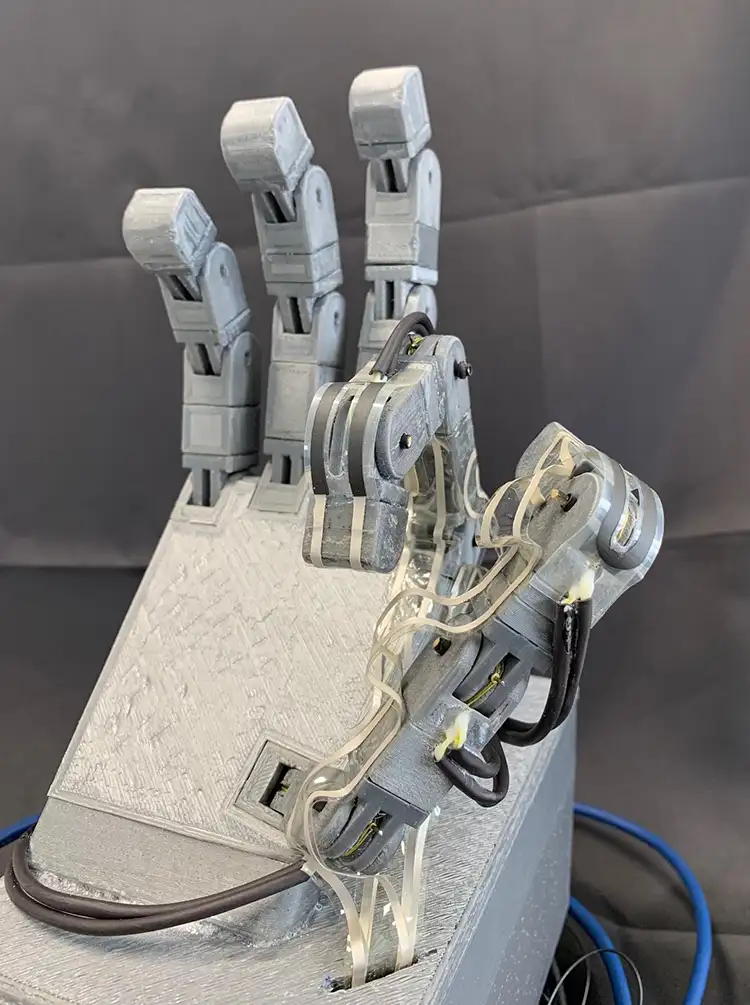
Motion sensor: This motion sensor demonstrator was made by printing DZP’s stretchable, silver-polymer paste F0280 and graphene ink G0360 on MUAS13111AA film (see Figure 4). It detects the motion of fingers accurately by measuring the resistance change across the circuit trace. The low-modulus and stress-relaxation properties of the substrate make this device comfortable to wear, which is becoming more important in many industries, for example, remote diagnosis in the healthcare field, worker safety and quality in manufacturing, training for sports, physical rehabilitation and industry.
Wearable sensor patch:Made by Panasonic in Japan, the initial concept was to integrate tracking and monitoring functionality into children’s garments. The device itself is based on a very simple, customizable concept. Each device incorporates only one or two functions, with the choice being up to the customer and connected to a mobile phone. For example, parents can remotely monitor if their baby is laying on her back or stomach, or they could track the hydration of their child during a sporting event.
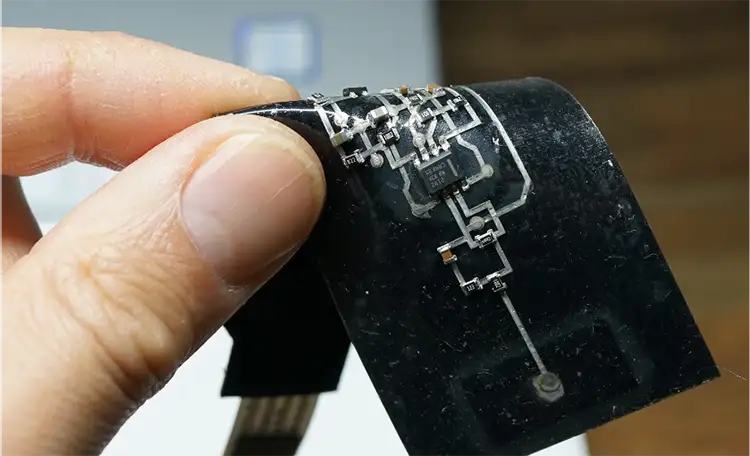
EMG sensor: An electromyography (EMG) sensor measures muscle activity in response to a nerve’s stimulation of the muscle. This device was made by Liquid Wire using Metal Gel eutectic indium gallium (EGaIn), liquid-metal paste and MUAS13111AA film to create a multilayer circuit populated with components and integrated onto a stretchable textile (see Figure 5).
Conclusion
The new generation of non-silicone, highly temperature-resistant, stretchable films potentially are a game-changing technology development for printed electronics. A novel polymer backbone features a high degree of crosslinking, imparting durability and environmental resistance. No longer are designers constrained by the manufacturing and performance limitations of thermoplastic films like TPU and PET. This circuit substrate is compatible with a wide variety of conductive elements, including screen-printed silver-polymer pastes, EGaIn liquid metals, bulk metals like sintered copper inks and other functional materials. The researchers at Panasonic Electronic Materials are continuing to develop a portfolio of soft circuit materials designed to enable the next generation of printed electronics.

Andy Behr, technology mgr.-Panasonic Electronic Materials Division (Osaka, Japan), leads a research and marketing team based in Silicon Valley that develops leading-edge materials for electronics and other emerging applications. He holds a Bachelor’s degree in Biology and a Master’s degree in Business. Andy has more than 25 years of experience in material technologies such as films, tapes, adhesives, encapsulants and conductive materials. He holds patents and has authored many technical papers. Andy is active in several electronic industry associations, including SMTA, IPC and IEEE. He can be reached at email: andy.behr@us.panasonic.com, https://na.industrial.panasonic.com/products/electronic-materials.

